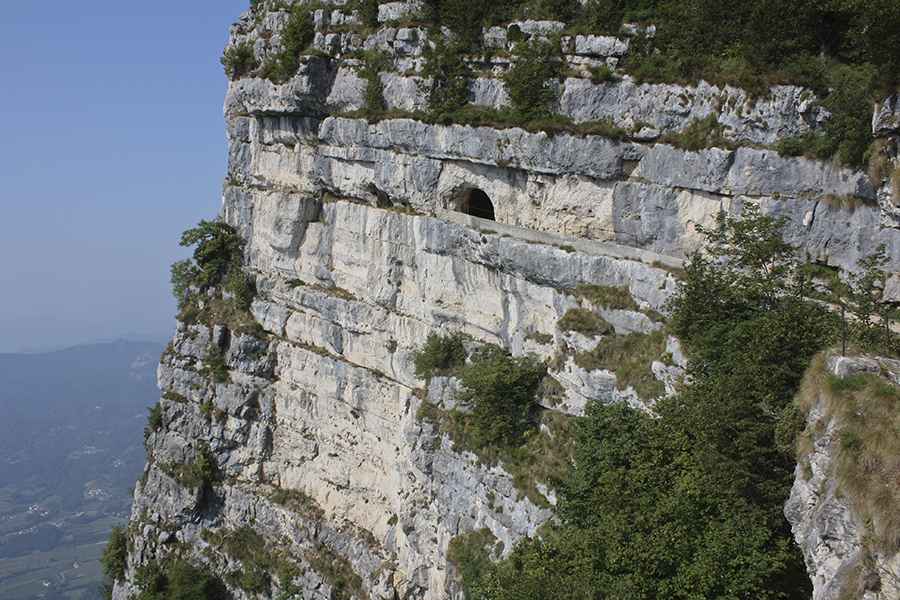Monte Cengio Mule Track: A Journey Through Italy's Great War Legacy
The Mulattiera di Arroccamento al Monte Cengio is a spectacular Italian military track from the Great War, dominating the Val d'Astico and offering breathtaking views. Constructed on a vertical wall and shielded from enemy fire, it was built to supply men and materials to the bastion of Monte Cengio, the last defense of the Po Valley.

Where is the Monte Cengio Mule Track?
This historic mule track is located on Monte Cengio, a mountain declared Sacred to the Homeland in the Vicenza Pre-Alps, in the province of Vicenza in the Veneto region of the country. Named the Granatiera, in honor of the "Grenadiers of Sardinia" who fought bravely in the area, the mule track mainly utilizes natural ledges, incorporating tunnels directly into the rock in some sections.
When was the Monte Cengio Mule Track built?
Built after the First World War between 1917 and 1918 by the 93rd Sappers Company of the 1st Engineer Regiment, the mule track aimed to provide a direct access route from the Vicenza plain to the summit area of the mountain. The decision to build the mule track followed an ancient and daring path, aiming to strengthen the defenses of Mount Cengio. This strategic location became the last western bastion of the Altopiano dei Seven Municipalities after Austro-Hungarian offensives. In the event of the Cengio's conquest, imperial forces could easily reach the plain below. The path was meant to connect to the Val d'Astico via a cableway, a plan that was never realized.
How long is the Monte Cengio Mule Track?
Designed to be accessible even in daylight, the mule track provided a secure ascent for soldiers and materials, offering shelter in its tunnels during enemy bombardments. A crucial element was the main tunnel at an altitude of 1351 m, 187 m long and 3x4 m in section, containing a concrete water tank with a capacity of 150 m³. Two lifting stations facilitated overcoming the total height difference of 1,150 m.
How is the Monte Cengio Mule Track?
The journey along the southwest side of the mountain massif covers approximately 4 km, delving into the living rock and passing through tunnels. Known as the "grenadier" path, it aimed to secure access to the summit area protected from Austrian artillery fire to the north. Covering a 150 m altitude difference, the mule track extends to the 1347 m summit, with numerous points of historical interest, including trenches, tunnels, artillery emplacements, and the famous grenadiers' jump. On hot days, the tunnels provide a refreshing break, and the entire journey offers breathtaking views of the Astico Valley and the plain beyond. The road is completely closed to motor vehicles.
Image credit: Depositphotos